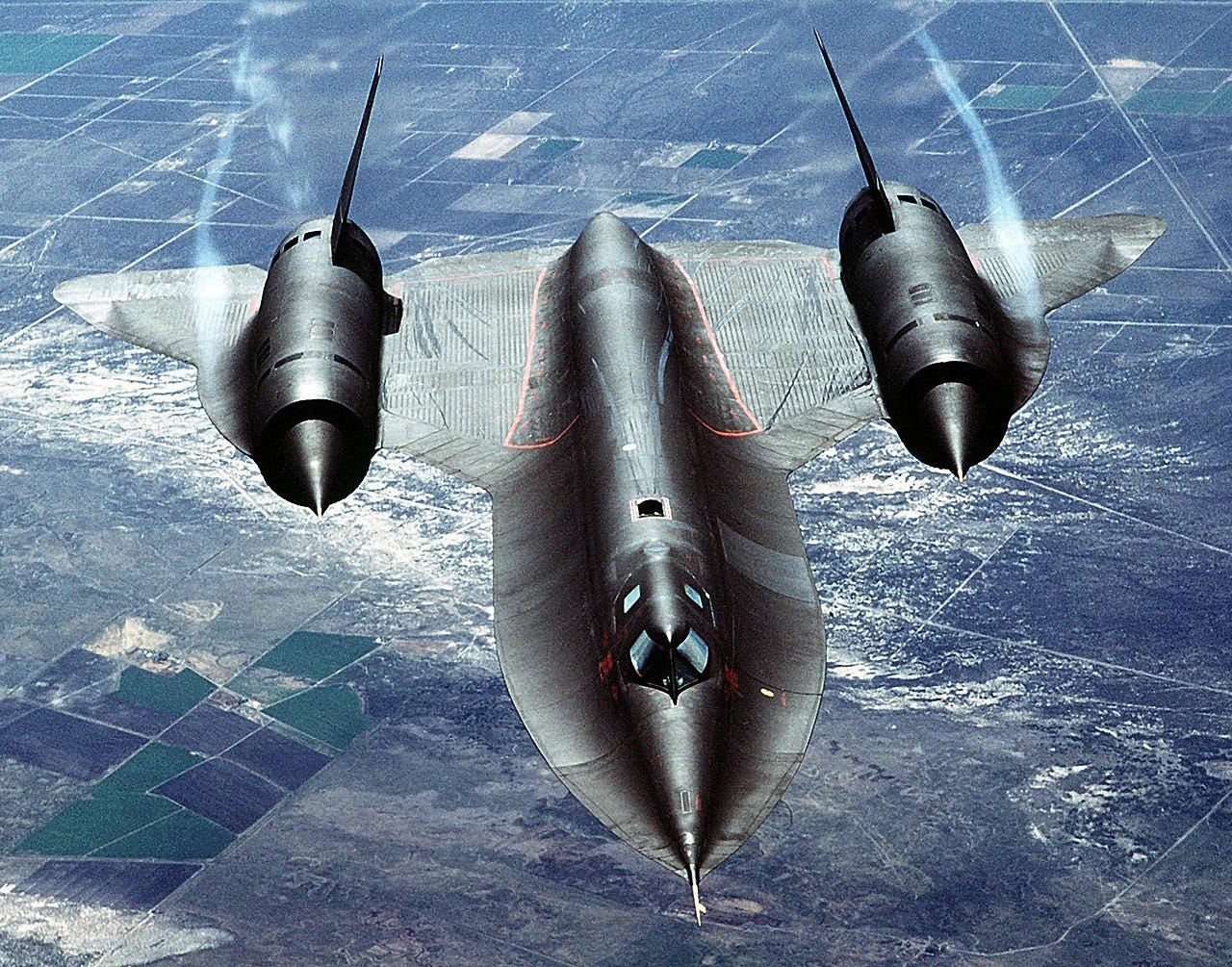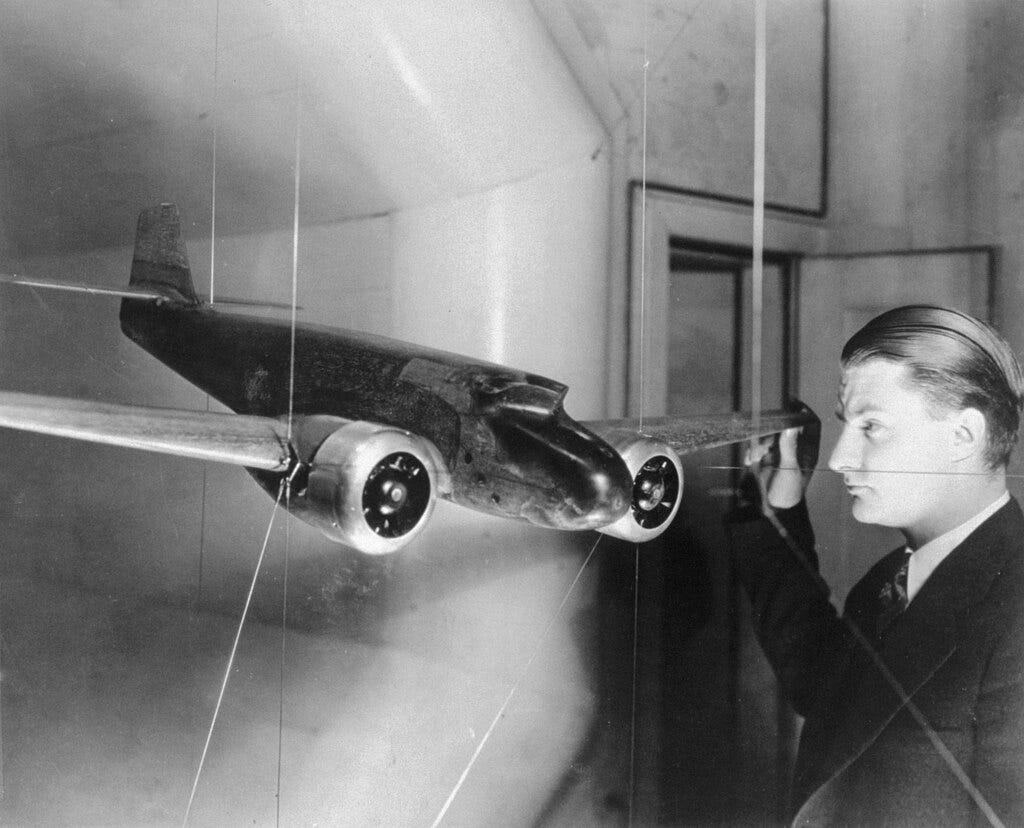In the world of aviation, few aircraft have reached the legendary status of the SR-71 Blackbird. Designed to outrun threats and fly where no enemy could reach, this sleek, futuristic jet pushed the limits of technology. With speeds exceeding Mach 3 (over 3,500 km/h) and an altitude capability of 26,000 meters (85,000 feet), the Blackbird was a marvel of engineering that shaped the future of reconnaissance aviation.

The Visionaries Behind the Blackbird
The SR-71 was born from necessity during the Cold War. The U.S. needed an aircraft that could penetrate deep into enemy territory, gather intelligence, and escape unscathed. Enter Clarence “Kelly” Johnson, one of the greatest aerospace engineers in history. Leading the Skunk Works division at Lockheed, Johnson and his team designed an aircraft so advanced that it remained unmatched for decades.
Johnson wasn’t alone in this mission. Ben Rich, another key Skunk Works engineer, played a significant role in refining the Blackbird’s design, particularly in its stealth and propulsion systems. Together, they led an elite group of engineers who defied conventional aerodynamics and materials science to create something truly special.
Design: A Fusion of Speed, Stealth, and Strength
The SR-71 was a work of art in terms of aerodynamics and materials:
Titanium Construction: Unlike most aircraft, which use aluminum, the SR-71 was made of 85% titanium to withstand the extreme heat generated at high speeds. Since titanium was rare and expensive, the U.S. even acquired some from the Soviet Union, ironically using their own resources to spy on them.
Distinctive Shape: Its sleek, elongated fuselage reduced drag, while its chines (sharp edges along the body) enhanced lift, making it more efficient at high speeds.
Variable-Geometry Inlets: The J58 turbojet engines, developed by Pratt & Whitney, had special spike-shaped inlets that adjusted during flight to optimize airflow, ensuring smooth operation even at 3 times the speed of sound.
Fuel That Could Take the Heat: The Blackbird used JP-7 fuel, a specially designed low-volatility fuel that wouldn’t ignite easily under the high temperatures of supersonic flight. It even required a triethylborane (TEB) injection system to start the engines.
Breaking Barriers: The Blackbird in Action
The SR-71’s first flight took place on December 22, 1964, with legendary test pilot Robert “Bob” Gilliland at the controls. From that moment on, it set records that still stand today.
Fastest Air-Breathing Manned Aircraft: On July 28, 1976, the Blackbird set an official speed record of 3,529.6 km/h (2,193.2 mph).
Highest Altitude Record: It also reached 25,929 meters (85,069 feet), proving its ability to soar above enemy defenses.
Outrunning Missiles: The SR-71 was targeted by over 4,000 surface-to-air missiles (SAMs) during its service, yet not a single one ever hit it. If a missile was detected, pilots simply accelerated to outrun it.
The Impact: How the SR-71 Changed Aviation
The SR-71 wasn’t just about speed; it changed aviation in many ways:
Stealth Technology: It pioneered early stealth principles with its radar-absorbing materials and unique shape, which later influenced stealth aircraft like the F-117 Nighthawk and B-2 Spirit.
Advanced Propulsion: The J58 engines, capable of transitioning from turbojet to ramjet-like operation, laid the groundwork for modern hypersonic propulsion.
Data Collection: The Blackbird’s reconnaissance systems, including side-looking radar and infrared sensors, became the foundation for today’s satellite and drone surveillance.
Retirement and Legacy
Despite its dominance, the SR-71 was retired in 1998 due to rising costs and the emergence of satellite reconnaissance and advanced UAVs (unmanned aerial vehicles). However, its influence remains undeniable.
Records Unbroken: Even today, no operational aircraft has matched its speed and altitude performance.
Inspiration for Future Aircraft: The SR-71’s lessons are guiding the development of hypersonic aircraft, like Lockheed Martin’s rumored SR-72 “Son of Blackbird”, which aims to fly at Mach 6.
Preserved for Generations: Several SR-71s are displayed in museums, including the Smithsonian National Air and Space Museum and California Science Center, where they continue to inspire aviation enthusiasts.
Conclusion: The Blackbird’s Timeless Appeal
The SR-71 wasn’t just an aircraft; it was a statement of engineering genius, innovation, and raw speed. It was a machine ahead of its time, built by some of the most brilliant minds in aerospace history. Even decades after retirement, it remains a symbol of human ingenuity and the relentless pursuit of pushing boundaries.
For aviation fans, the Blackbird isn’t just a jet—it’s a legend that will never be forgotten.





